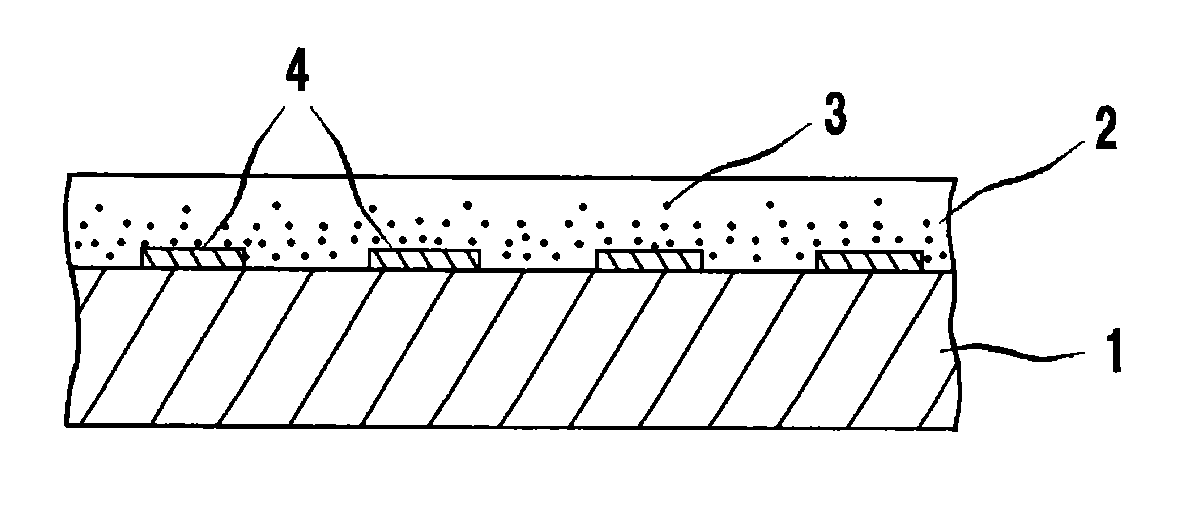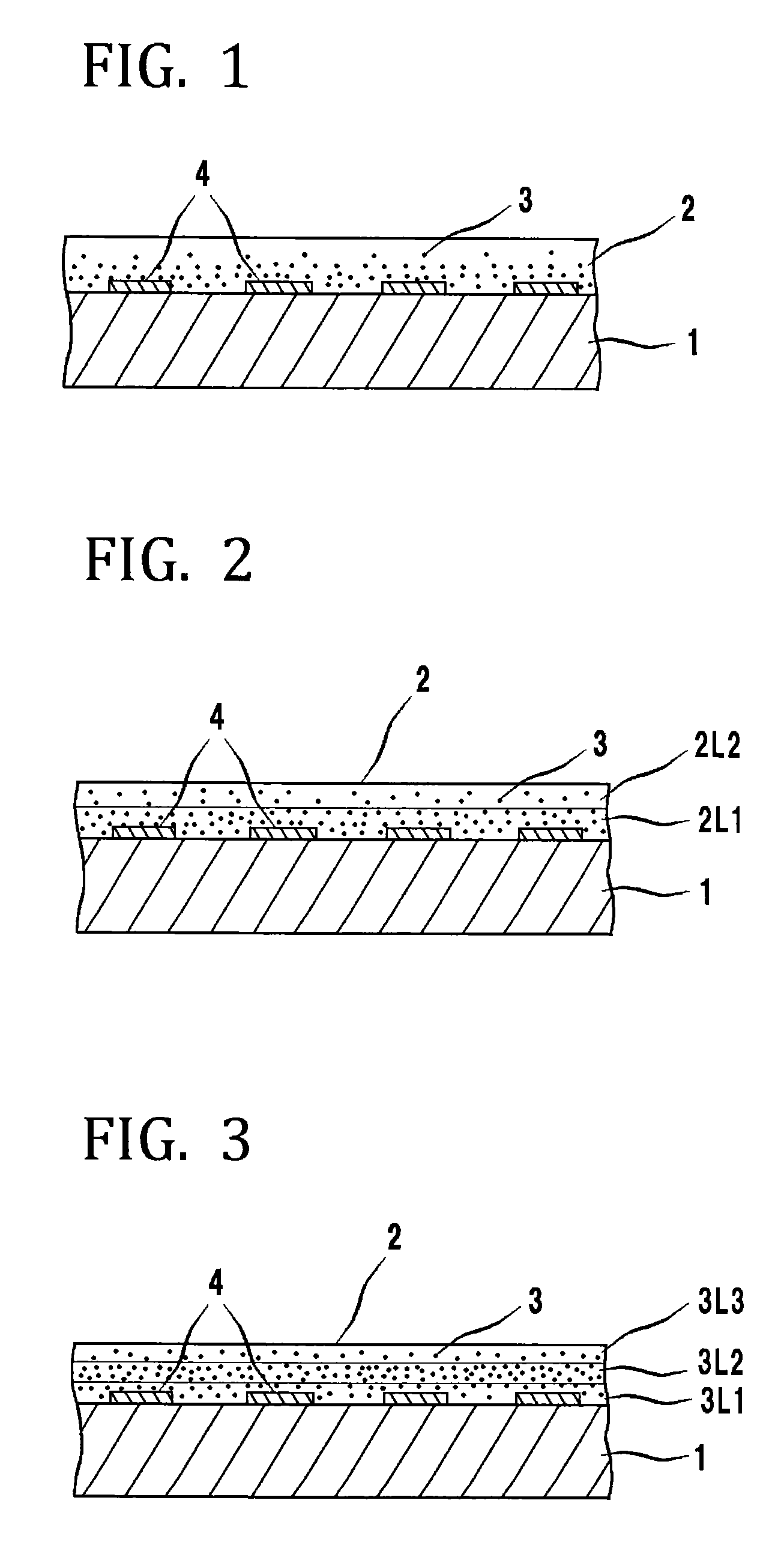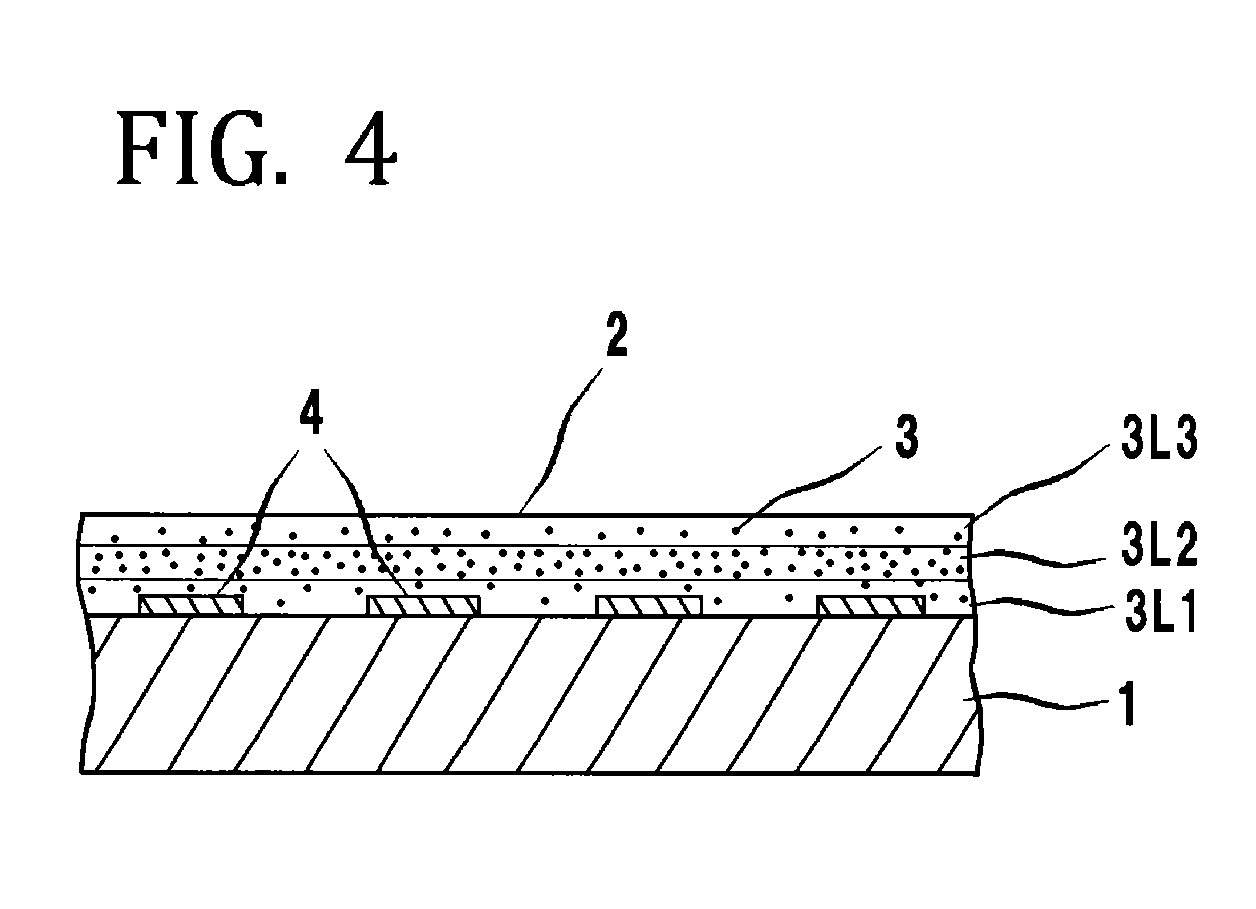Layered structure and photosensitive dry film to be used therefor
a technology of dry film and layered structure, which is applied in the direction of photosensitive materials, instruments, photomechanical equipment, etc., can solve the problems of easy peeling of the layers, deterioration of the adhesion of the first photosensitive resin layer to the substrate, and easy damage to the adhesive surface of the first photosensitive resin layer, etc., to achieve excellent adhesion, reduce shrinkage on curing, and high reliability
- Summary
- Abstract
- Description
- Claims
- Application Information
AI Technical Summary
Benefits of technology
Problems solved by technology
Method used
Image
Examples
synthesis example 1
[0178]Into an autoclave equipped with a thermometer, a device for introduction of nitrogen and alkylene oxide, and a stirrer, 119.4 parts of a cresol novolak resin (trade name “Shonol CRG951” manufactured by Showa Highpolymer Co., Ltd., OH equivalent: 119.4), 1.19 parts of potassium hydroxide, and 119.4 parts of toluene were charged. The air in the system chamber was replaced with nitrogen while stirring the mixture. The temperature of the mixture was then increased by heating and then 63.8 parts of propylene oxide was gradually added dropwise thereto to cause reaction thereof for 16 hours at 125-132° C. under pressure of 0-4.8 kg / cm2. Thereafter, the reaction solution was cooled to room temperature. To this reaction solution, 1.56 parts of 89% phosphoric acid was added and mixed therewith to neutralize potassium hydroxide, thereby obtaining a propylene oxide reaction solution of cresol novolak resin having a nonvolatile content of 62.1% and the hydroxyl equivalent of 182.2 g / eq. Th...
examples 1 to 12
[0182]By using the compositions of the above-mentioned photocurable and thermosetting resin composition examples 1-12, the photosensitive dry films were produced in the combination shown in Table 2. In the case of Examples 1-7, the photosensitive dry film having a pattern-formable photosensitive resin layer of the two-layer structure was produced by forming the first photosensitive resin layer (2L1) of 15 μm thickness contacting a substrate and the second photosensitive resin layer (2L2) of 5 μm thickness contacting this first photosensitive resin layer (2L1). In the case of Examples 8-12, the photosensitive dry film having a pattern-formable photosensitive resin layer of the three-layer structure was produced by forming the first photosensitive resin layer (3L1) of 5 μm thickness contacting a substrate, the second photosensitive resin layer (3L2) of 10 μm thickness contacting this first photosensitive resin layer (3L1), and the third photosensitive resin layer (3L3) of 5 μm thickne...
PUM
 Login to View More
Login to View More Abstract
Description
Claims
Application Information
 Login to View More
Login to View More - R&D
- Intellectual Property
- Life Sciences
- Materials
- Tech Scout
- Unparalleled Data Quality
- Higher Quality Content
- 60% Fewer Hallucinations
Browse by: Latest US Patents, China's latest patents, Technical Efficacy Thesaurus, Application Domain, Technology Topic, Popular Technical Reports.
© 2025 PatSnap. All rights reserved.Legal|Privacy policy|Modern Slavery Act Transparency Statement|Sitemap|About US| Contact US: help@patsnap.com



